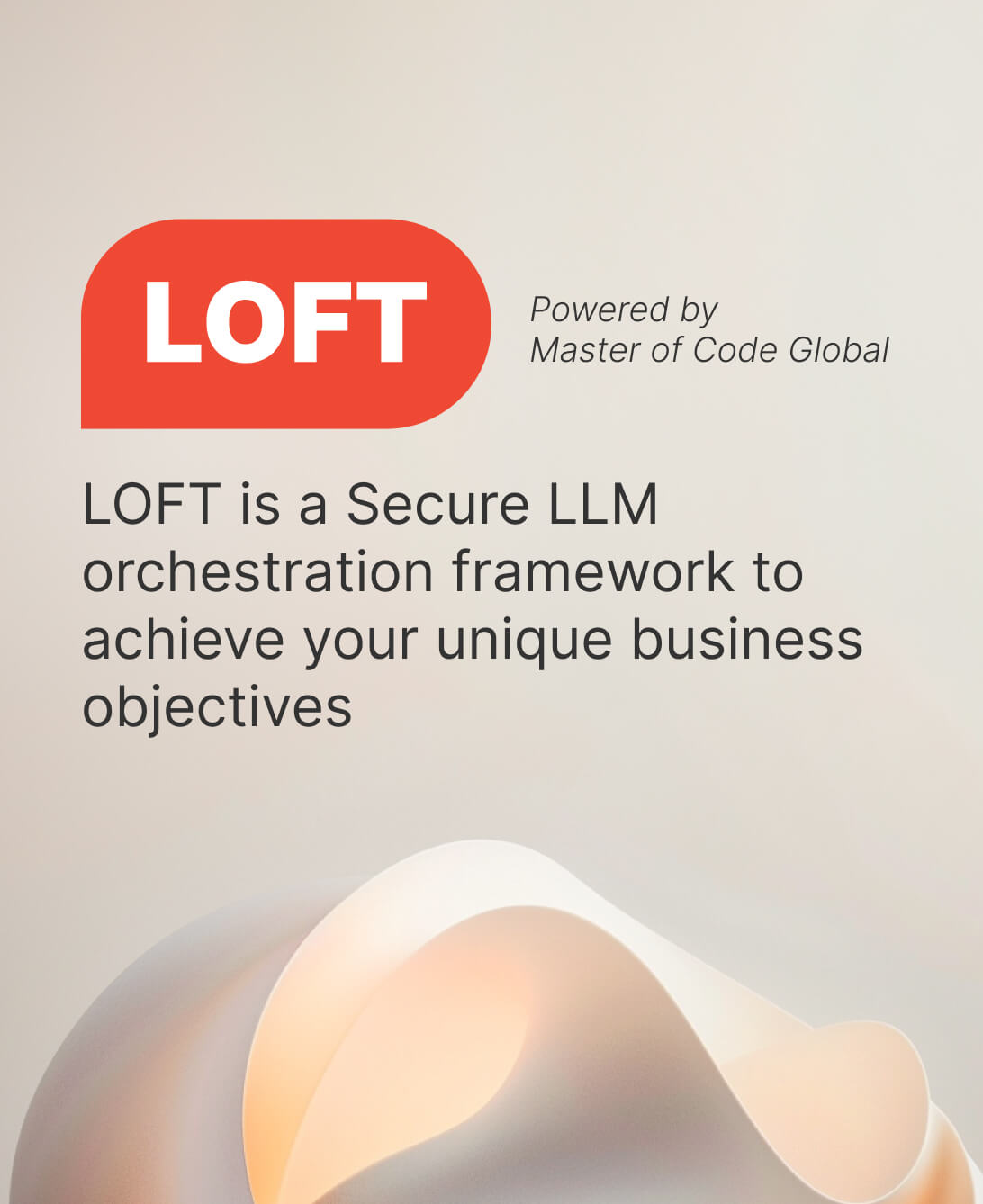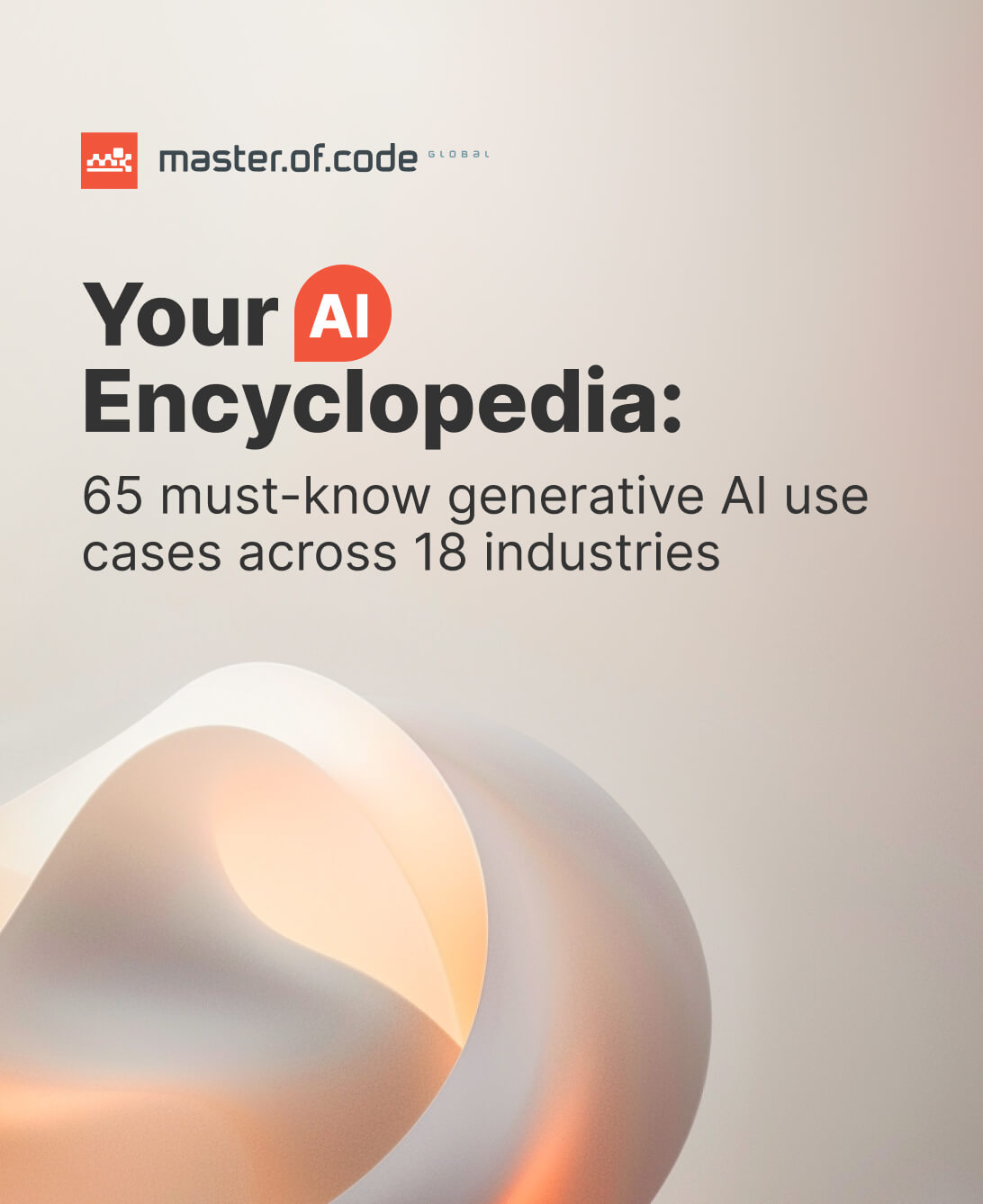In the fast-paced world of artificial intelligence, Large Language Models (LLMs) are now taking center stage. Businesses have quickly taken notice. In fact, 58% have already started to work with LLMs, driven largely by the widespread success of tools like ChatGPT.
That said, it’s important to recognize that these hyped models aren’t a magic solution. AI assistants powered solely by, for example, ChatGPT are like teenagers with a massive vocabulary – impressive, but lacking in focus and direction. This is where conversation design (CD) comes in. It’s an important discipline that connects AI power, business goals, and actual design to create meaningful customer interactions.
This post will explore why investing in conversation design remains essential, even as LLMs reshape the landscape. We’ll examine the limitations of popular models, the unique value that quality flow development brings, and how these two elements can work together to deliver exceptional customer experiences. By the end, you’ll see why a thoughtful approach to conversation design isn’t just an option, but a necessity for businesses aiming to excel in the LLM era. Let’s get started!
Table of Contents
LLMs: A Powerful Tool, Not a Magic Wand
Large Language Models have reimagined diverse sectors with their impressive capabilities in NLP and generation. However, it’s critical to understand both their strengths and weaknesses, particularly in business environments.

LLMs excel in several areas:
- Natural Language Understanding: Trained on vast amounts of internet text, models interpret and generate human-like speeches across diverse topics.
- Content Generation: They produce articles, summaries, and even code snippets, streamlining various content creation tasks.
- Language Translation: LLMs translate between multiple dialects with increasing accuracy.
- Information Summarization: They swiftly process and consolidate large volumes of text.
- Adaptability: With fine-tuning and prompt engineering, LLMs can be tailored to perform specific tasks.
Despite these capabilities, large language models have significant constraints:
- Absence of Specific Domain Knowledge: LLMs are general-purpose models trained on broad internet data. They lack the specialized information background vital for many business use cases. For instance, Generative AI might struggle with regulatory requirements in fields like finance or healthcare.
- Inability to Navigate Specialized Processes: Many companies need intelligent assistants designed and developed to handle narrow tasks. These include troubleshooting complex products or managing booking and reservation systems.
- Channel-Specific Communication Challenges: LLMs may falter across different platforms. Each of them – chat, or voice – has its own style, expectations, and constraints. For instance, if you’ve tested popular chat applications in voice mode, you’ve likely noticed they don’t naturally adhere to spoken communication norms. They might provide a long, winding response without giving the user a chance to interrupt or clarify. Or they might fail to ask follow-up questions at appropriate moments, leaving the conversation feeling one-sided and unnatural.
- Voice and Tone Limitations: Every company has its own personality and its own way of speaking to customers. It’s part of what makes a brand unique. LLMs, however, are general-purpose models not familiar with and trained on a company’s jargon, tone of voice, or speaking or writing style.
- Data Privacy Concerns: Providing AI models with sensitive business data raises significant privacy and security questions.
- Potential for “Hallucinations”: LLMs can generate plausible-sounding but entirely fictitious facts, a major risk in official communication.
These limitations highlight an important point: while large language models are powerful tools, they’re not plug-and-play solutions for the evolving needs of a company. So, how can businesses tap into the power of these solutions while overcoming such hurdles? The answer lies in conversation design.
Conversation Design: The Human Touch
This is a multidisciplinary field that draws from linguistics, psychology, user experience design, and computer science to craft conversations that feel natural, purposeful, and satisfying. Think of it as the choreography of digital dialogue. Just as a choreographer plans each step and movement in a dance, a designer maps out the flow of interaction, anticipating user needs, potential misunderstandings, and moments where the AI might stumble.
At its core, CD embodies several key principles:
- User-Centric Approach: Always start with the user’s needs and expectations. As a result, conversation designers create experiences that solve real problems efficiently and intuitively.
- Context Awareness: Ensure the AI understands and maintains context throughout an interaction.
- Brand Alignment: Reflect the company’s brand voice, terminology, and values in every interaction.
- Channel-Specific Design: Take advantage of the unique features of each communication platform while respecting its limitations. For instance, in messengers, use rich capabilities (combining text, images, and interactive elements) to enhance engagement without overwhelming the user.
- Error Handling and Graceful Failures: When the AI encounters misunderstandings or lacks information, it should be able to recover and smoothly continue the conversation.
- Continuous Improvement: Use real historical data from chats to refine and improve the experience iteratively.
To show these principles in action, consider an AI agent we designed and developed for a global electronics manufacturer. We created an Apple Messages for Business AI assistant with LLM capabilities to serve as a virtual shopping assistant. The solution showcases several key aspects of conversation design:
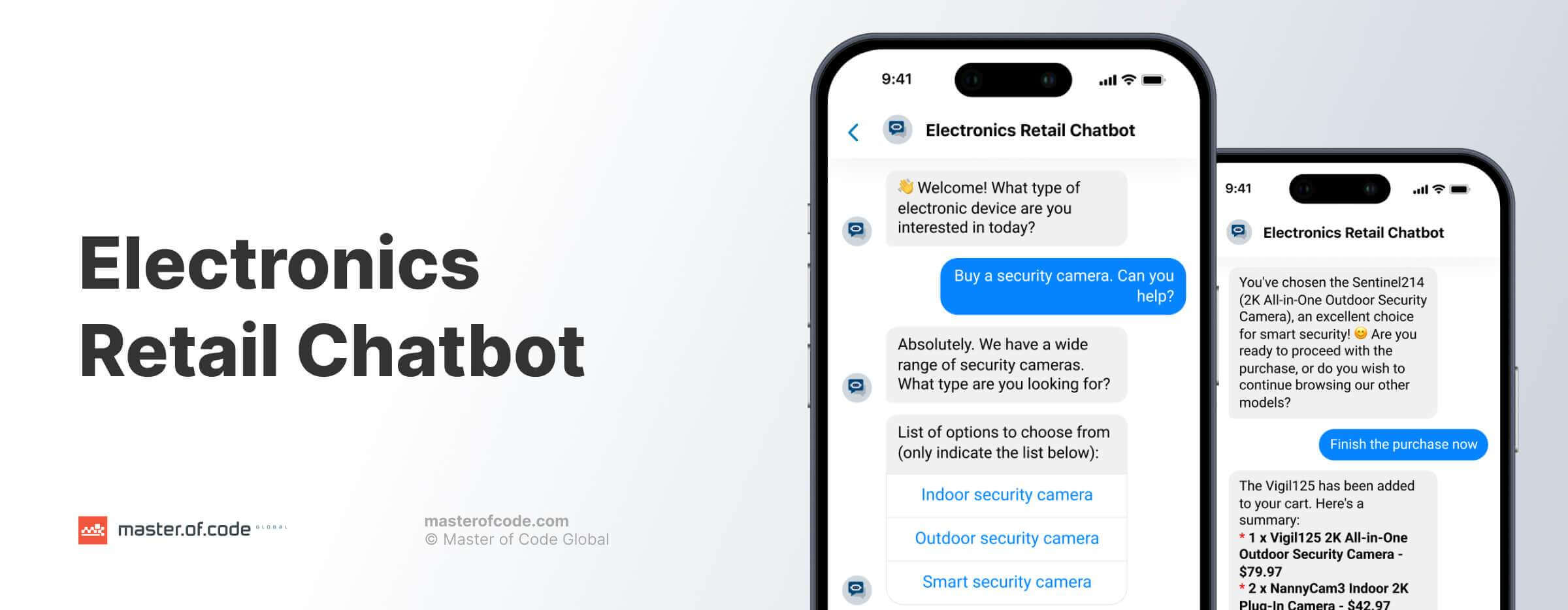
- It understands and responds to a wide range of product questions, and tailors responses to customer needs.
- By integrating with Shopify, the bot maintains context throughout the buying journey.
- It leverages rich messages and other channel-specific features of Apple Messages for Business, creating engaging product showcases while avoiding information overload.
- Recognizing channel limitations, the tool offers a seamless handoff to human agents for complex queries.
The results speak for themselves: an 80% average CSAT score, 84% engaged session rate, and an average order value of around $300. As this example shows, conversation design isn’t just about creating pleasant interactions. It’s also a strategic tool for business growth.
Next, we’ll look at how CD can steer LLMs to deliver more focused, precise, and engaging AI-powered interactions.
LLMs + Conversation Design: The Perfect Partnership
While large AI models bring powerful language processing to the table, it is still important to define the tone of voice, register, length, and structure of responses, as well as to design the flow of the interaction. This should be done while taking into consideration technical constraints, business goals, and the target audience.
Conversation design provides this framework. It makes sure that LLM capabilities are utilized effectively and appropriately for each business context. Let’s explore how it can enhance AI-powered interactions:
- Defining Communication Parameters: Conversation designers establish guidelines for tone, register, and response structure, ensuring the model’s outputs align with brand voice and user expectations.
- Interaction Flow Mapping: Specialists also create logical pathways for dialogs. These flows help the solution navigate complex interactions effectively. Context and relevance are maintained throughout the user’s journey.
- Technical Integration: By understanding system constraints, designers optimize LLM usage, and balance performance with resource efficiency.
- Goal-Oriented Dialogues: Experts keep interactions focused on business objectives. It prevents large models from generating irrelevant content. Each interaction is purposeful, driving towards specific goals.
- User-Centric Approach: Designers tailor LLM interactions to specific audience needs. They consider user preferences, knowledge levels, and communication styles. This customization improves engagement and satisfaction.
To demonstrate these principles in action, let’s examine another project by Master of Code Global for BloomsyBox, a floral subscription company. For their Mother’s Day campaign, we designed and developed a Generative AI-powered assistant using Apple Messages for Business. The chatbot engaged users with a daily quiz and offered personalized greeting cards, and free bouquets for winners.
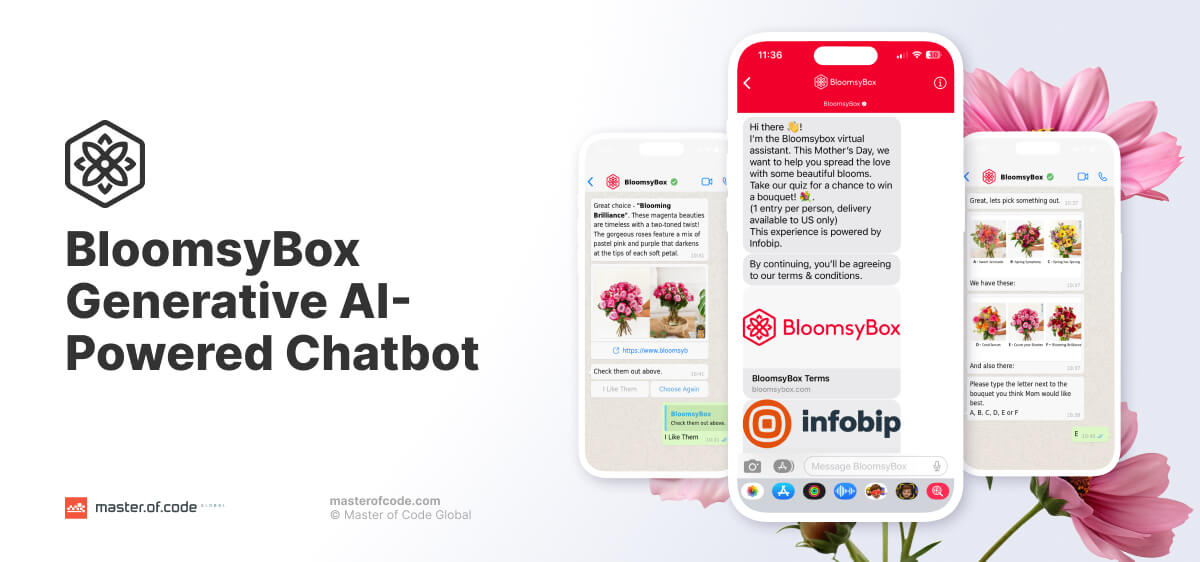
The BloomsyBox Mother’s Day campaign shows how CD principles enhance LLM-powered interactions:
- Conversation designers crafted a daily quiz format with five carefully sequenced questions. Context was maintained by tracking progress and scores. Each interaction built on the last, creating a cohesive journey.
- A reward system offering free bouquets to successful participants aimed to increase user engagement.
- We integrated LLM-powered personalized greeting cards into the experience. This feature aligned with the business goal of enhancing the gift-giving process. We made sure to control the inherent unpredictability of the LLM while also enabling creative, user-specific output.
- Throughout the experience, we made sure the digital agent maintained alignment with BloomsyBox’s brand voice. The bot persona, which followed conversation design best practices, was carefully crafted and consistently applied.
As a result, 38% of users chose the LLM-generated cards. The campaign achieved high engagement, with 60% of users completing the quiz and 78% of winners claiming their prize.
While the BloomsyBox campaign leveraged Generative AI for customer engagement, we also designed and developed a Slack AI assistant for an internal use case at an enterprise-level technology company. This chatbot integrated an LLM with the company’s knowledge base, which allowed employees to quickly access product and HR information.
In both cases, conversation designers customized the model to address different needs. They defined the tone, structure, and interaction flows to align with specific business goals. This is where Master of Code Global’s expertise shines.
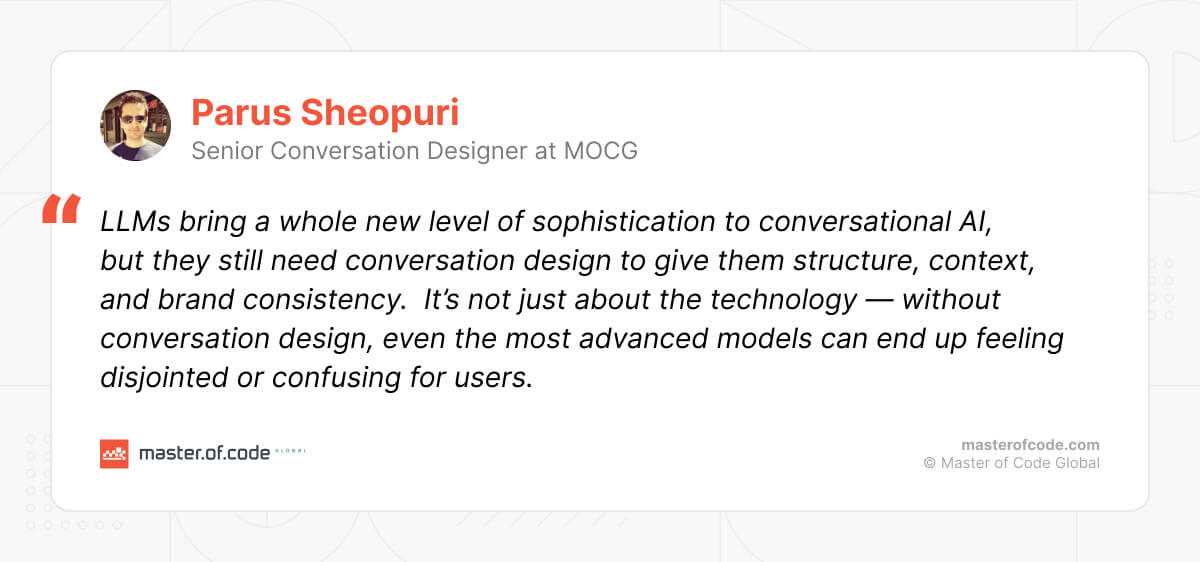
Why Partner with Master of Code Global
With over 500 projects delivered and a team of 250+ devoted professionals, Master of Code Global has established itself as a leader in conversation design services. We don’t just implement AI assistants; we architect experiences that drive business growth. Beyond delivering solutions, we empower you to build your own. Our consulting team will work closely with your brand to provide hands-on coaching, training, and guidance on how to build your AI roadmap.
By choosing Master of Code Global, you’re not just getting a service provider. You’re partnering with a team that applies data-driven insights to address customer frustrations, reduce agent overhead costs, and create engaging experiences that help your brand stand out.
Conclusion
Conversation design is the effective framework that harnesses the power of LLMs while addressing their limitations. By defining communication parameters, mapping interaction flows, and ensuring alignment with business objectives, CD empowers businesses to create AI-powered interactions that are truly exceptional. It is not just a luxury; it’s a strategic imperative.
At Master of Code Global, we excel in turning these strategies into reality. With our expertise and data-driven approach, we help companies unlock the full potential of LLMs while delivering meaningful, results-driven interactions.
Ready to build your own Conversational AI solution? Let’s chat!

